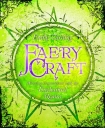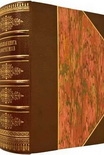Faery Craft: Weaving Connections with the Enchanted Realm Carding, Emily (first color ebook reader txt) 📖

Book online «Faery Craft: Weaving Connections with the Enchanted Realm Carding, Emily (first color ebook reader txt) 📖». Author Carding, Emily
Probably the best-known example of one of the sidhe who is both a Faery queen and a goddess is the Irish war goddess named the Morrigan. She plays a major part in all the battles of the Tuatha de Danann and is a significant power within the Celtic pantheon. Her name has been given to many places within the Celtic landscape, and her influence can be seen to spread through the lands and ages into many other tales and cultures. True to her shapeshifting nature, she has many guises, most notably Morgan le Fay of the Arthurian tales. Other people of the sidhe who may be considered deities include Lugh, a solar deity from whom we get the Irish harvest festival of Lughnasadh; Nuada of the silver hand, who was their king; Manannan Mac Lir, a god of the sea; and Etain, who was both a sorceress and a goddess of sovereignty.
Scotland brings us strong, powerful giantess faery queens to suit its rugged landscape and unforgiving climate. Here we find such fascinating figures as the Cailleach, a great shapeshifter of tremendous strength who is often credited with forming the landscape, whose presence may be seen in folklore throughout the British Isles and beyond. A similar figure may be found in Nicneven, the great faery queen of Scottish lore who dwells beneath the mountain Ben Nevis. She has often been equated with the ancient Greek goddess Hekate, seen as being not only the queen of the Faeries, but also of witches and the dead.
Nearby Wales also gives us a rich vein of Faery gods and goddesses, including Gwyn Ap Nudd, the king of the Tylwyth Teg (the Welsh Faery race), who rules the Welsh underworld, Annwn, and leads the wild hunt with his Faery hounds.
In other lands, similarly blurred lines may be found between Faery and deity. Within Nordic tradition we find gods such as Loki, who is descended from giants (who again are defeated by the Nordic pantheon), and Freyr, who is the king of Alfheim, the land of the light elves. In fact, the Nordic gods are separated into two races, the Aesir and the Vanir, and the Vanir share many qualities with Faery races such as the sidhe, such as great beauty and the gifts of prophecy and sorcery. They are also deeply connected to agriculture and the land. In his book Leechcraft, Stephen Pollington tells us that while “the Norse myths mostly concern the two main races of gods—Aesir and Vanir—the poetic tradition often juxtaposes Aesir and Alvar as ‘gods and elves.’ ”
The name Freyr, or Frey, translates as “lord,” and the name of his twin sister of the Vanir, Freya, translates as “lady,” but it is unclear whether there is any connection to the title sometimes given to the trooping faeries of lords and ladies or, indeed, the titles of the Wiccan God and Goddess, who are often referred to as Lord and Lady; it would appear to be no more than a curious coincidence. However, Freya also has some definite parallels with Faery, being the psychopomp queen of the Valkyries, who, with their connection to battle and the dead, as well as an association with ravens, display some strong connections to the Irish Morrigan.
Freyr is sometimes referred to as a horned god, and like horned gods of other traditions, he is strongly associated with fertility, both of humans and the land itself. Indeed, most deities that are considered to be kings of Faery are depicted as horned and have this same association with fertility. Like Pan of Greek mythology, many display a voracious sexual appetite and priapic qualities, which are normally combined with a lack of morality as we would understand it; so, ladies, be warned! These are real and very powerful energies.
Other horned gods who are considered kings of Faery include Cernunnos of Celtic tradition, Herne the Hunter of English folklore, and Gwyn ap Nudd and his earlier counterpart Arawn of Welsh mythology. Veles, or Volos, of the Slavic culture is another horned god who, though not overtly linked to the Faery lore of that land, is seen as ruler of the underworld and the dead. Similarly, the ram-horned god of ancient Egypt, Khnum, was associated with fertility and the underworld. This chthonic role is strongly associated with Faery, as both the ancestors and the Faery race may be found in the underworld.
When we look at deities who are considered to be Faery queens, we can also see some striking commonality. Goddesses who rule over Faery are usually associated with war and battle, and quite often take a psychopomp role in that they can travel between worlds and guide the souls of the slain on their journey to the underworld. They invariably are considered sorceresses and shapeshifters, with powerful skills in the magickal arts, and usually with similar animal





Comments (0)